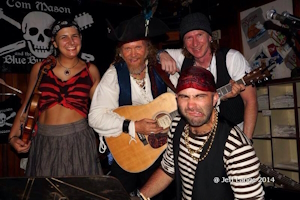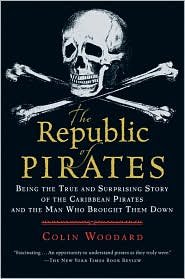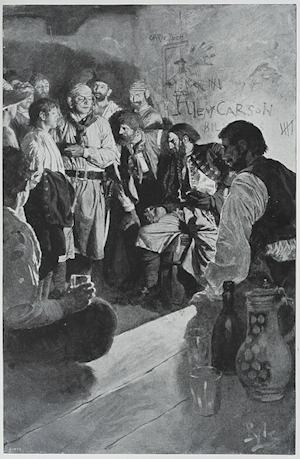 Tom Mason and the Blue Buccaneers are a wild band of Nashville musicians who dress like pirates and play a rollicking mix of piratical sing-alongs, rousing historical rave-ups, afro-cuban tinged ballads, Cajun sea shanties, and bluesy Irish jigs, transforming big festivals, performing arts centers, and urban nightclubs into bustling seaside taverns at the turn of the seventeenth century.
Tom Mason and the Blue Buccaneers are a wild band of Nashville musicians who dress like pirates and play a rollicking mix of piratical sing-alongs, rousing historical rave-ups, afro-cuban tinged ballads, Cajun sea shanties, and bluesy Irish jigs, transforming big festivals, performing arts centers, and urban nightclubs into bustling seaside taverns at the turn of the seventeenth century.
Sadly Tom Mason passed away in August 2024.

 The 36-year-old John Brownrigg is an experienced seaman from Newcastle. Although he officially holds the position of coxswain on Dream Chaser, he is one of the most indispensable crewmembers in the day-to-day running of the vessel, as well as maintaining the sails and rigging. Generally good-natured, he is known to be hot-tempered at times, especially with regards to the love-hate relationship that has developed between him and William Benton. A committed Jacobite, he was a sailor on a privateer vessel which took the Old Pretender, James Stuart, from France to Peterhead in Scotland, although they arrived too late for the battle.
The 36-year-old John Brownrigg is an experienced seaman from Newcastle. Although he officially holds the position of coxswain on Dream Chaser, he is one of the most indispensable crewmembers in the day-to-day running of the vessel, as well as maintaining the sails and rigging. Generally good-natured, he is known to be hot-tempered at times, especially with regards to the love-hate relationship that has developed between him and William Benton. A committed Jacobite, he was a sailor on a privateer vessel which took the Old Pretender, James Stuart, from France to Peterhead in Scotland, although they arrived too late for the battle.  In the early eighteenth century, the Pirate Republic was home to some of the great pirate captains, including Blackbeard, “Black Sam” Bellamy, and Charles Vane. Along with their fellow pirates—former sailors, indentured servants, and runaway slaves—this “Flying Gang” established a crude but distinctive democracy in the Bahamas, carving out their own zone of freedom in which servants were free, blacks could be equal citizens, and leaders were chosen or deposed by a vote. They cut off trade routes, sacked slave ships, and severed Europe from its New World empires, and for a brief, glorious period the Republic was a success.
In the early eighteenth century, the Pirate Republic was home to some of the great pirate captains, including Blackbeard, “Black Sam” Bellamy, and Charles Vane. Along with their fellow pirates—former sailors, indentured servants, and runaway slaves—this “Flying Gang” established a crude but distinctive democracy in the Bahamas, carving out their own zone of freedom in which servants were free, blacks could be equal citizens, and leaders were chosen or deposed by a vote. They cut off trade routes, sacked slave ships, and severed Europe from its New World empires, and for a brief, glorious period the Republic was a success. The term quartermaster can be confusing, as the meaning can vary according to the context. The quartermaster on a naval vessel stood watch next to the helmsman and was responsible for maintaining the ship’s course, whereas in armies on land, a quartermaster was an officer who supervised logistics and requisitions, managed the stores and barracks, and distributed supplies and provisions. A pirate quartermaster had numerous, less well defined responsibilities, which could vary from ship to ship.
The term quartermaster can be confusing, as the meaning can vary according to the context. The quartermaster on a naval vessel stood watch next to the helmsman and was responsible for maintaining the ship’s course, whereas in armies on land, a quartermaster was an officer who supervised logistics and requisitions, managed the stores and barracks, and distributed supplies and provisions. A pirate quartermaster had numerous, less well defined responsibilities, which could vary from ship to ship.